
From April 9 (Tuesday) to June 16 (Sunday), 2019, a joint project with the National Museum of Ethnology "Beads-Connecting the Nature, Connecting the World" is held at the National Science Museum. Since I participated in the media preview, I will tell you about the exhibition right away!
When it comes to "beads", many people think of colorful glass balls such as red, blue and green. However, in the long history of humanity, beads, which mean "the connection of various parts" , have been made of various materials for various purposes.
What materials and technologies have we used to make beads for what?
This time, with the cooperation of Minpaku (National Museum of Ethnology), Kahaku will introduce the relationship between beads and humanity from the perspectives of ethnology and natural science that are their specialties.
Plant beads
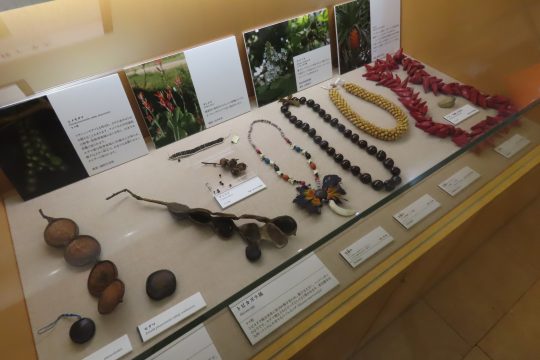
Various plants are lined with bees of material
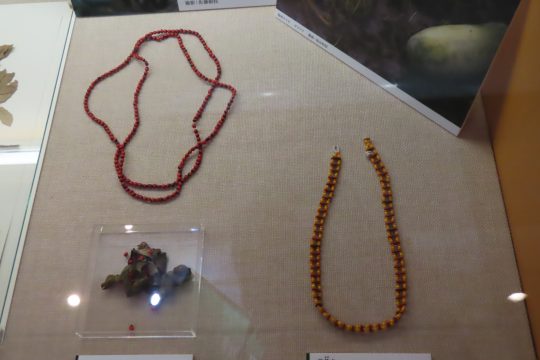
A necklace made of colorful azuki bean (Fabaceae) seeds

Chief's hat with a seedling of Touzuki-zushi tightly packed on the surface
Since ancient times, various types of seeds, fruits, flowers, leaves, wood, etc. have been used as plant beads. There are various characteristics, such as those that have holes already, such as Jusdama (Poaceae), and that they have a flower-like smell like Plumeria and Jasmine.
For what reason did humanity use the plant part for beads? Here you can see the ideas of the people who made it by looking at the colors, shapes, smells, ease of access and processing.
Animal beads
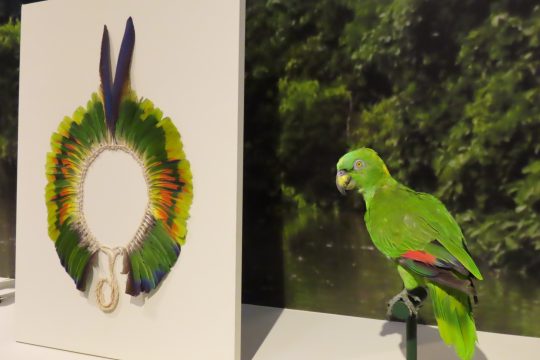
The people of the Amazon make use of the bird feathers to grow every year and make beads. Even if you don't change your hand, it will naturally be such a beautiful circle

A trinket made by reusing Bac's feet. It sounds like it sounds when you wear it, so it seems like you enjoyed it

Jaguar's tusk's necklace that only high-ranking persons are allowed to wear
Here, beads are displayed that use various parts of animals such as bones, leaves, fangs, nails, hair, feathers and eggshells.
At first glance, some people are surprised that “Is this a bead?” However, in this exhibition, the bead is broadly defined as “Beads”, and in the history of 100,000 years, there are many kinds You can see that "beads" were created.
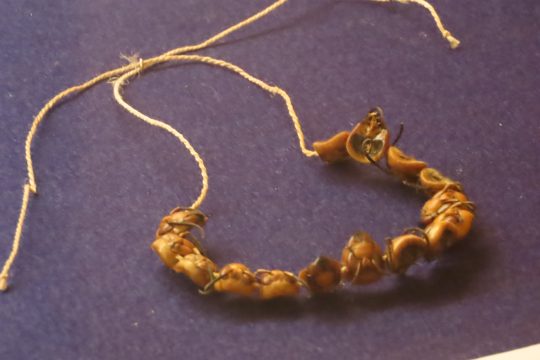
This is how the hornet's head is connected (!) Neck (arm) decoration. Produced by the Taiwan's native Tyals, they considered the hornets to be the most horrific wildlife, and thought that with their power they could overcome the evil spirits.
It should be noted that the point is not to kill to make these accessories. Animal beads are used for bones, nails, feathers and other parts that can not be eaten, so the meat is probably delicious, and the remaining parts are beautifully shaped as ornaments. We can see that we are stuck in a sustainable (sustainable) spirit to use animal resources without waste.
Shell beads
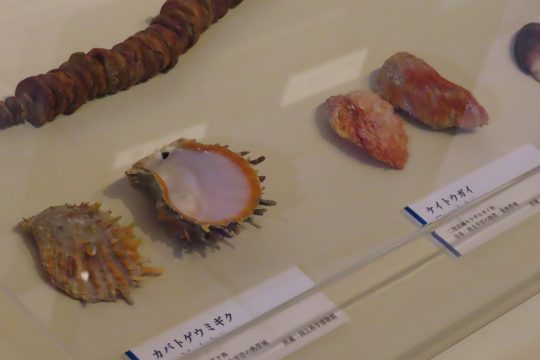
There is little color in the world of shellfish, but "red" is a special color. People cut out the red part of the shellfish, or baked the shellfish and incorporated red into the accessories
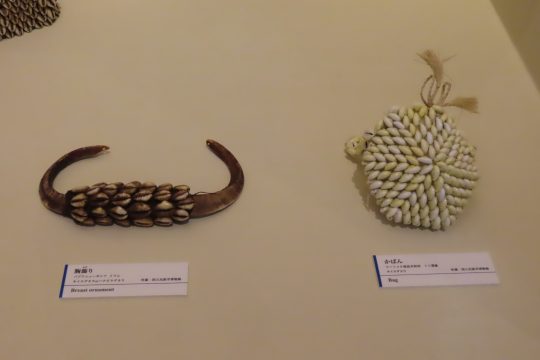
A chest decoration (left) using the ventral surface (one with a mouth of the shell) of Takaragai and a bag using the back with beautiful gloss (right). The material is the same, but the right side is somewhere modern
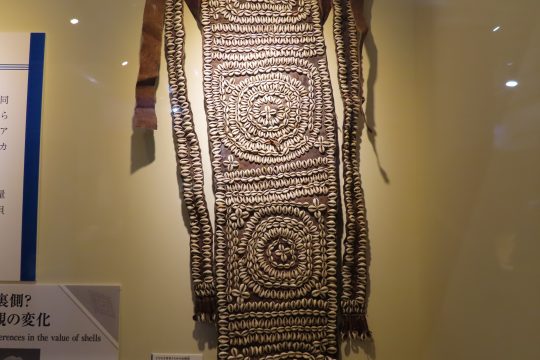
A skin bag for carrying a child on the back of the baby
The oldest bead of humanity has been found from Africa and West Asia 7 to 100,000 years ago, and both are small-sized snail consorts, the source material of which is the mussel. So to speak, shellfish are the oldest beads in history.
The main component of the beads is sea and land snails, but they can be arranged in large quantities in the same size and shape, and have been transported to distant places through trade because they are easy to carry. Here, we examine the trade range and cultural characteristics of the people of the region from the distribution of shell beads and the nature of the material.
The world of beads spreads more and more
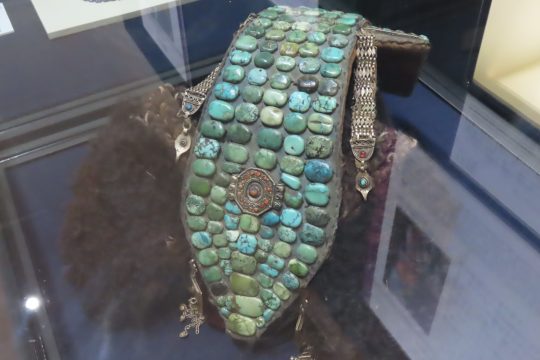
Tibetan necklace with turquoise. The color is said to express the spirit of water
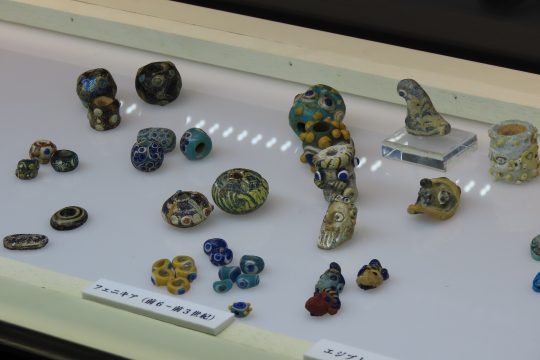
We display glass beads, which have been widely used in the world since the first production in ancient Syria, by region and by age.
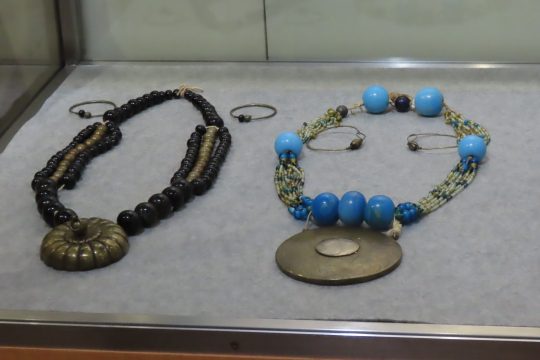
Ainu religious ceremonies, Tamasai (necklace) worn by Kamu Inomi. We traded the natural resources and glass beads used by Ainu, and made these accessories.
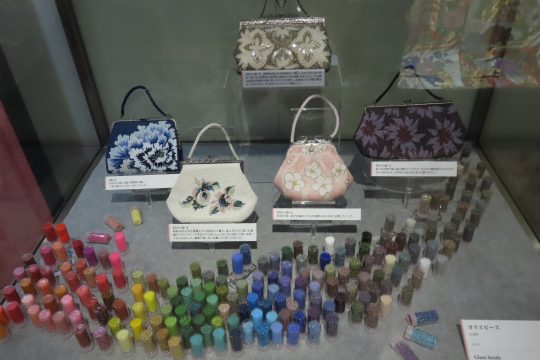
In the "21st Century Beads", Japanese beads are also displayed. More than 1000 colors have been developed and used in handbags etc.
Furthermore, the exhibit introduces the history and works of stone, metal, glass and bead processing with each material. The last chapter "Beads in the 21st Century" introduces beads made of new materials and techniques, and looks at the future of how we will interact with beads in the future.
The "connected things (Beads)" that colors our attire. What has been traced back to that history has been the awe of nature and living things, and the work of ancestors who are trying to realize a sustainable society.
The exhibition will be held until Sunday, June 16, 2019.
The first collaboration between the National Science Museum and the National Museum of Ethnology "Beads-Connect Nature, Connect the World" .
How about visiting once by all means?
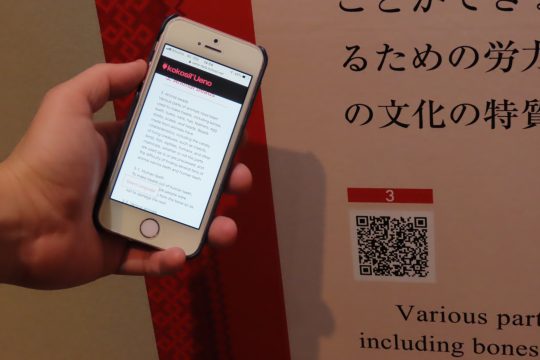
Also at this exhibition, Kokosil provides a multilingual guide service. You can enjoy multilingual commentary such as English and Chinese by reading the QR code of the commentary panel!
Outline of the event
| Exhibition name | National Museum of Ethnology and National Science Museum Joint Exhibition "Beads-Connect Nature, Connect the World" |
| Session | Tuesday, April 9, 2019-Sunday, June 16 9 am to 5 pm (Friday and Saturday, April 28 (Sun)-May 5 (Sun, Holiday) until 8 pm; May 6 (Mon., Holiday) until 6 pm) ※ Admission is 30 minutes before each closing time ※ There is a possibility to change about opening day or opening time by future circumstances |
| closing day | Every Monday, May 7 (Tuesday) (but April 29 (Mon, Holiday), May 6 (Mon, Holiday), June 10 (Mon)) |
| Venue | National Science Museum |
| Fee for viewing | General and university students: 620 yen (group 500 yen) Under high school students and over 65 years old: free |
| Official site | http://www.kahaku.go.jp/event/20019/04beads/ |


